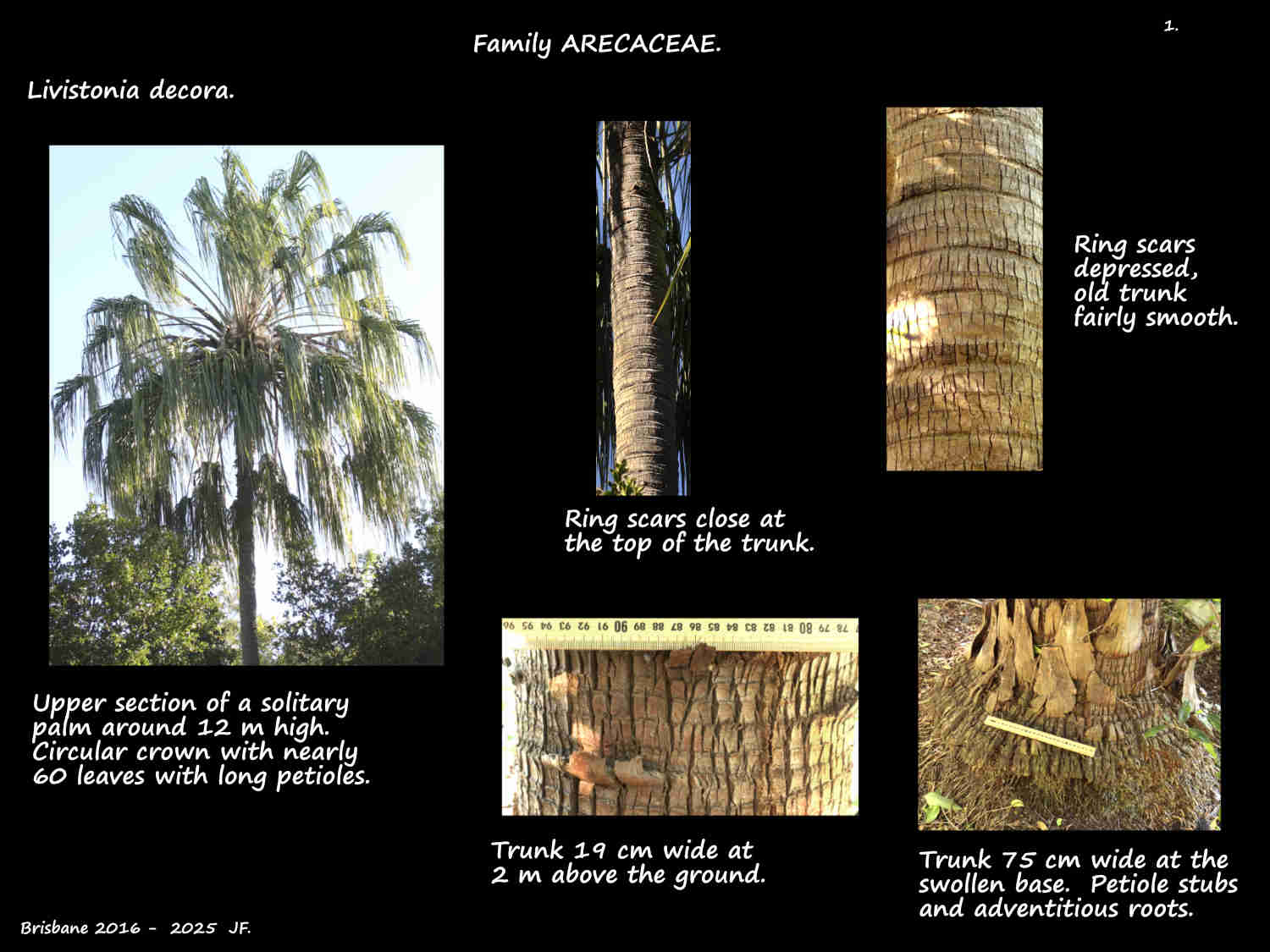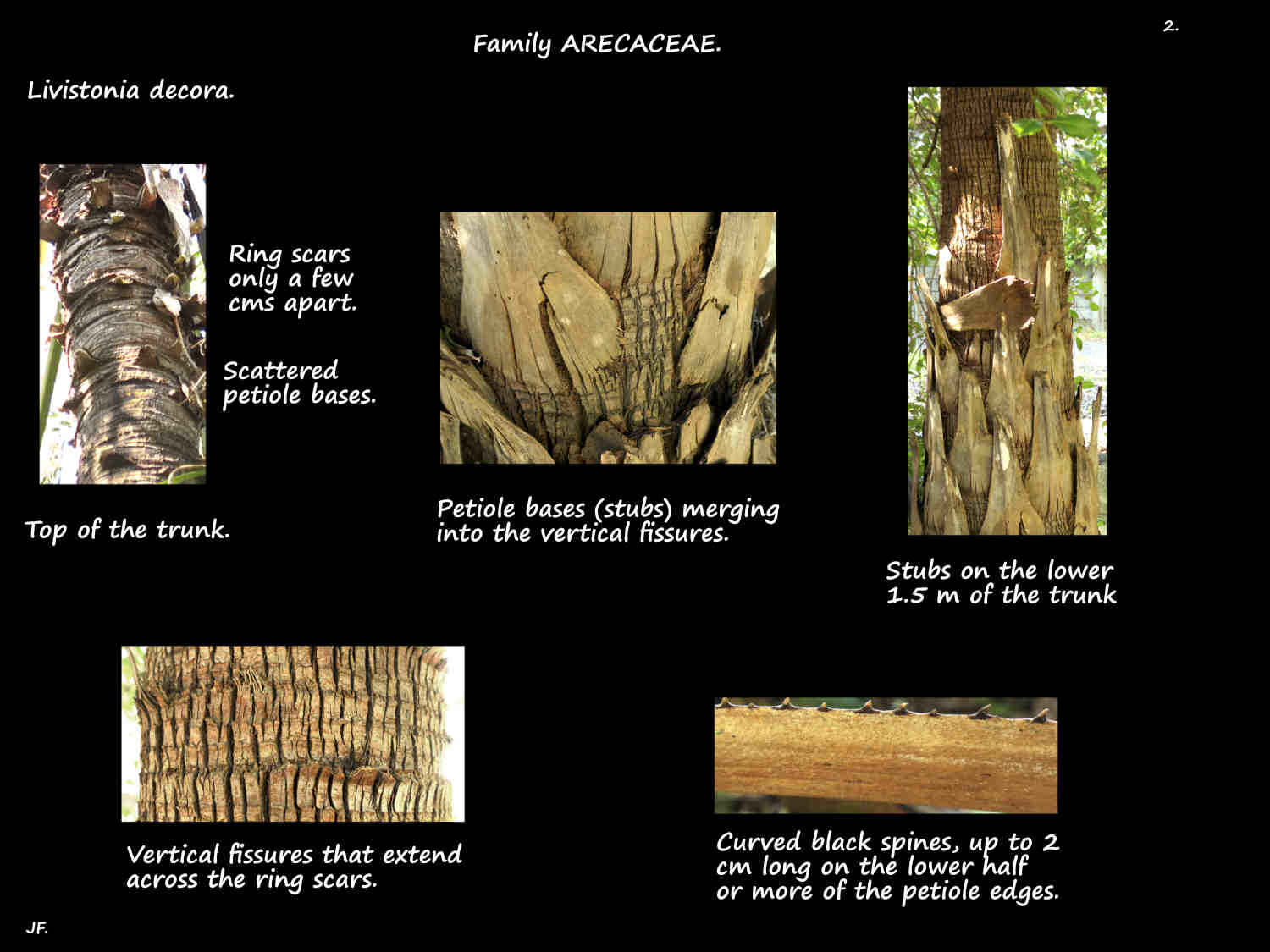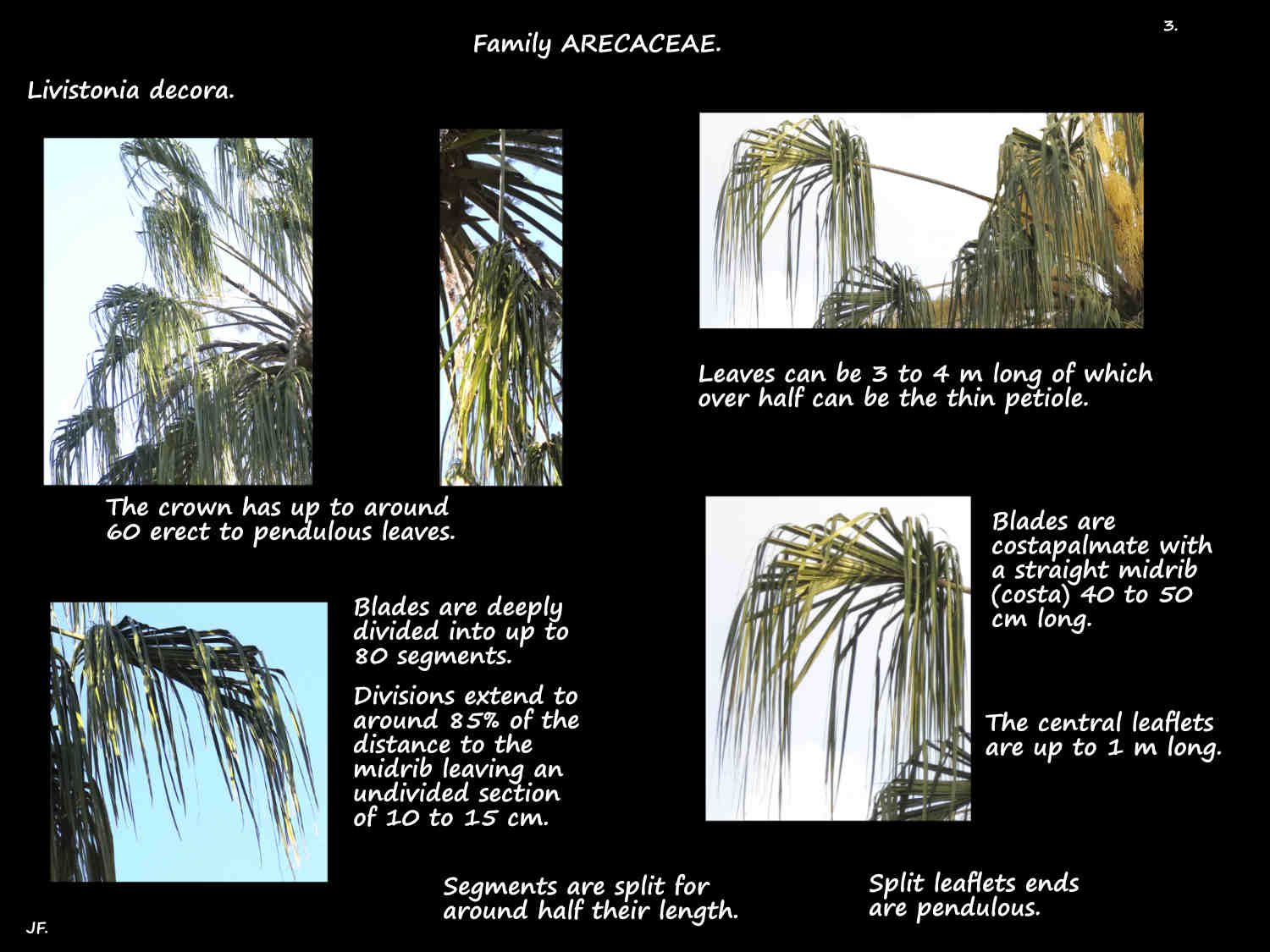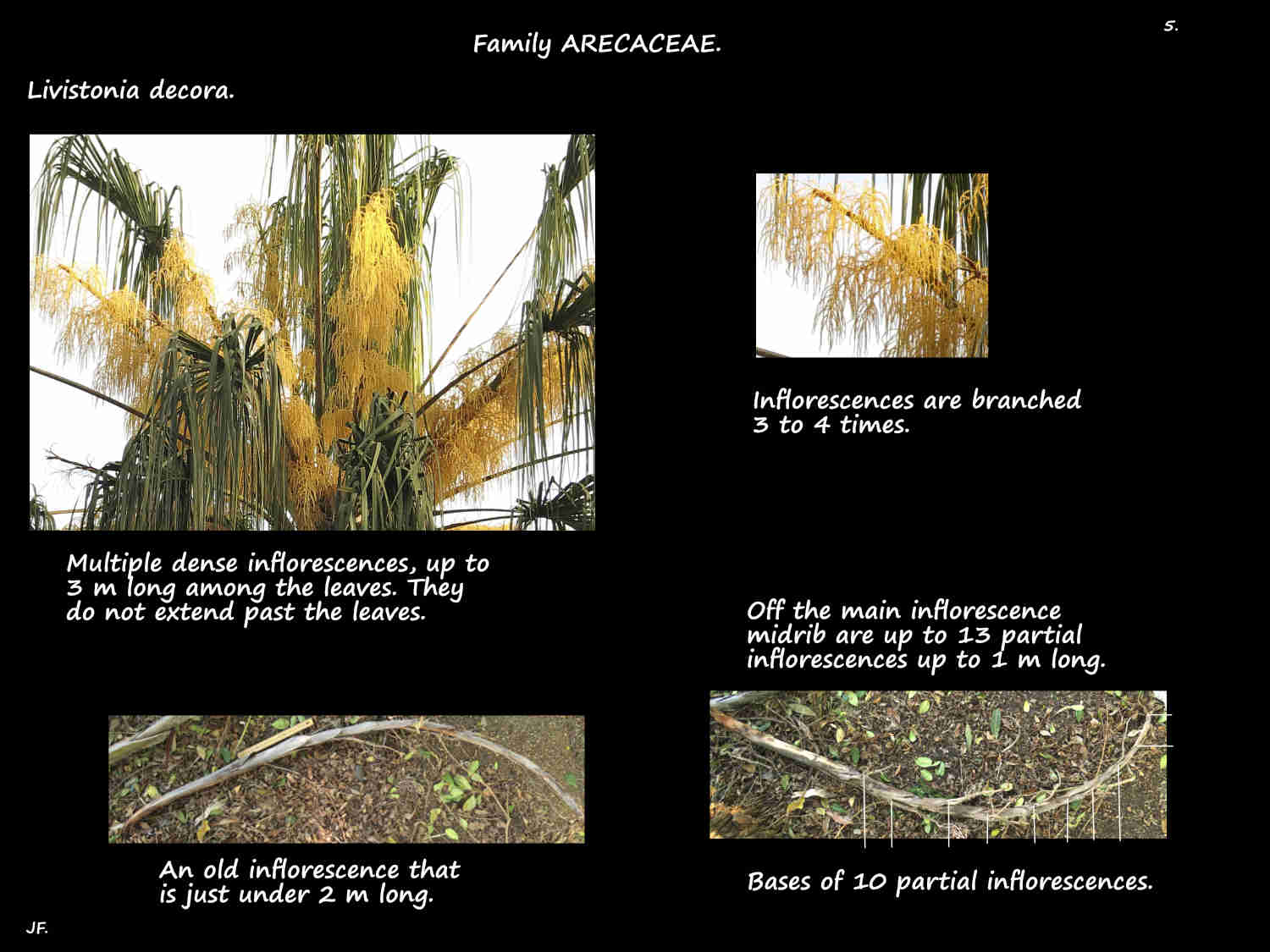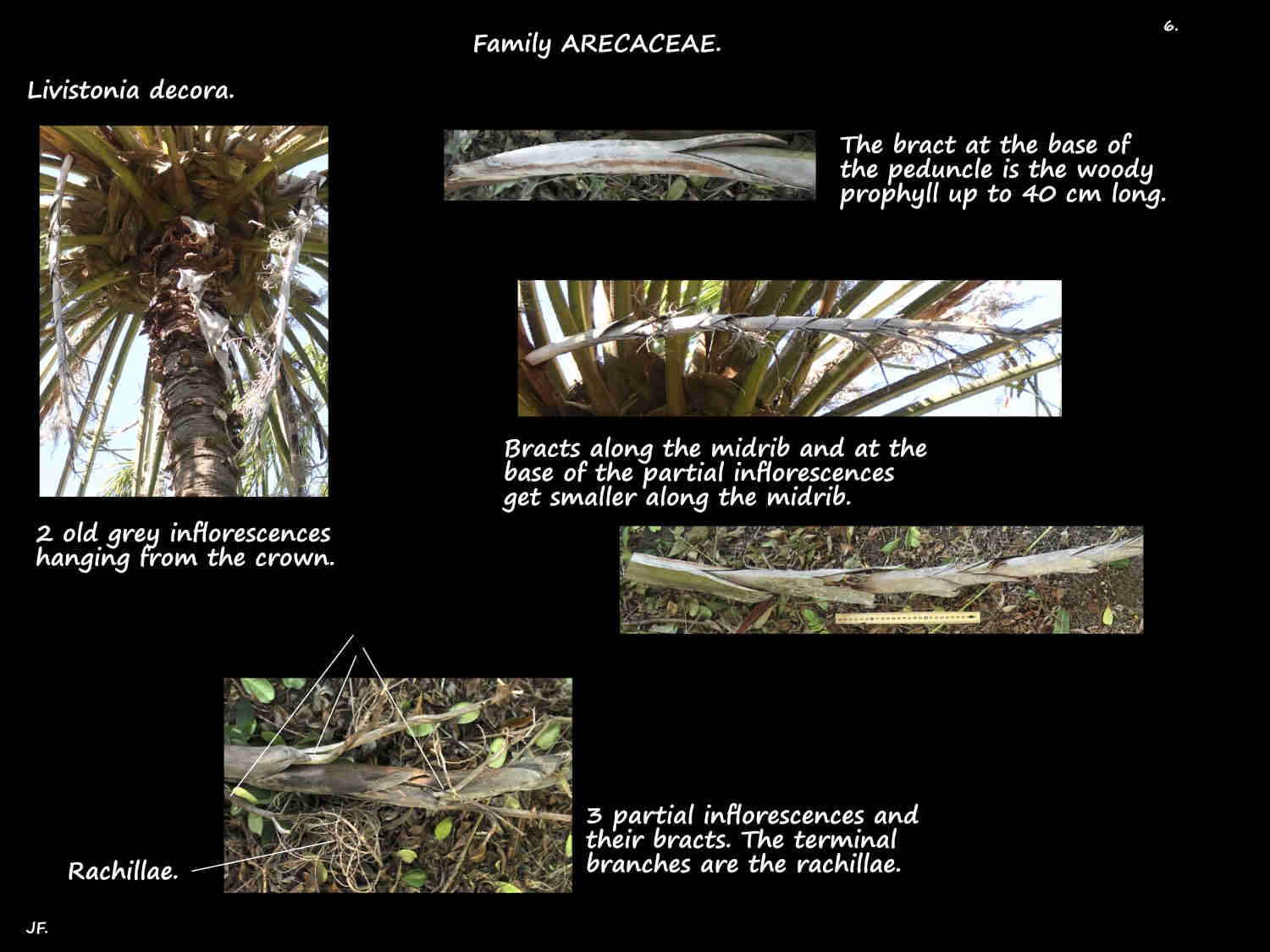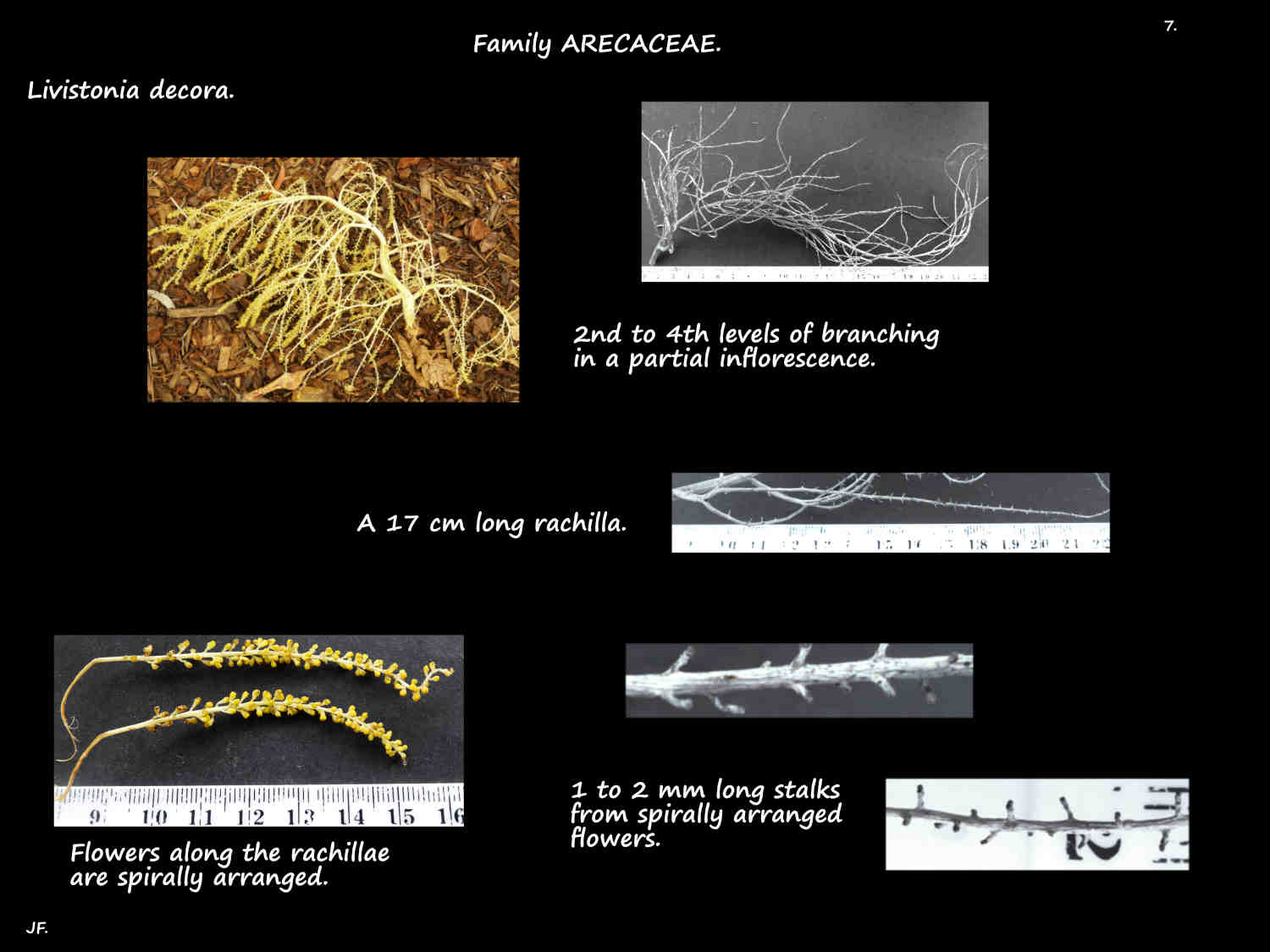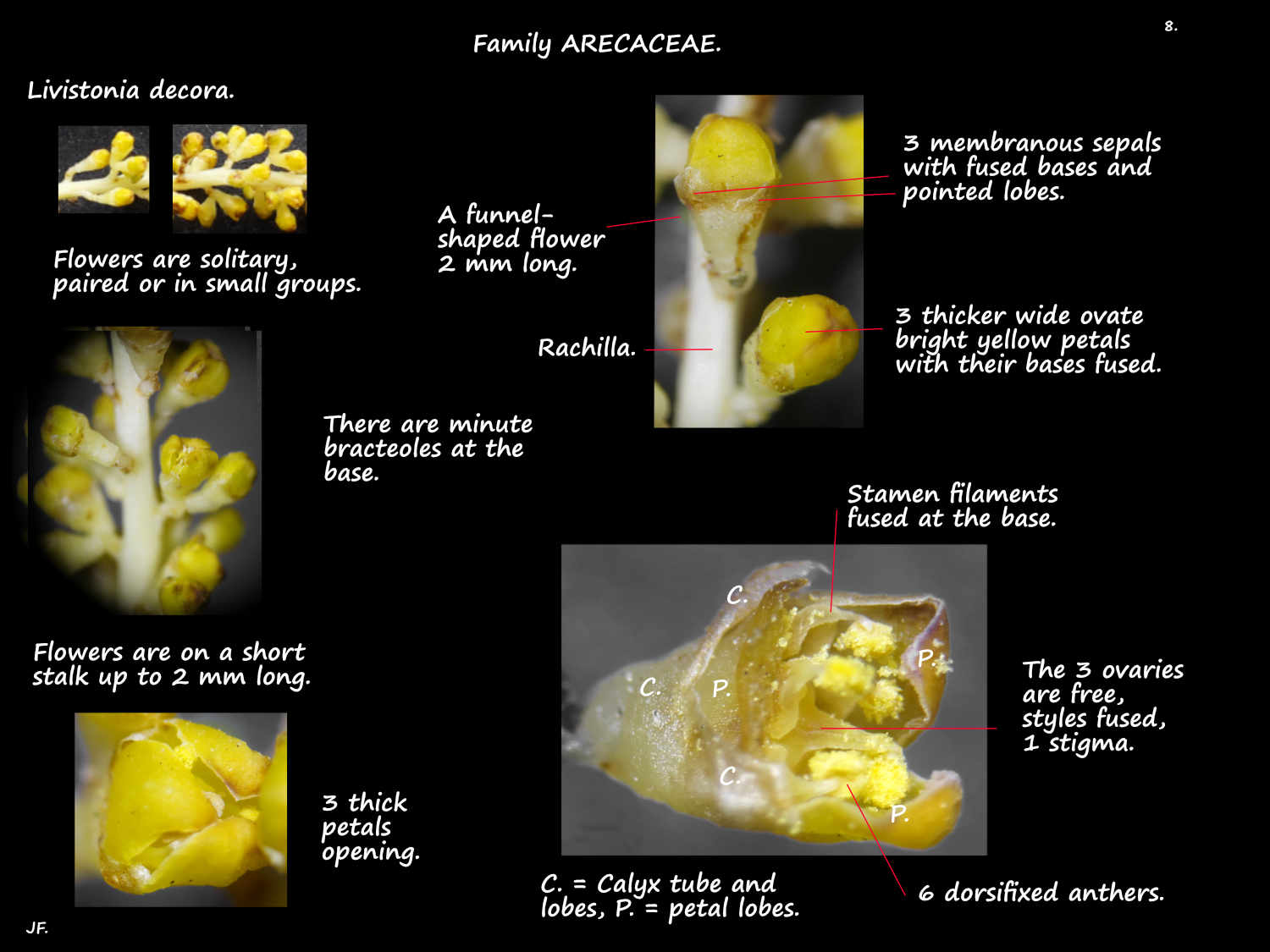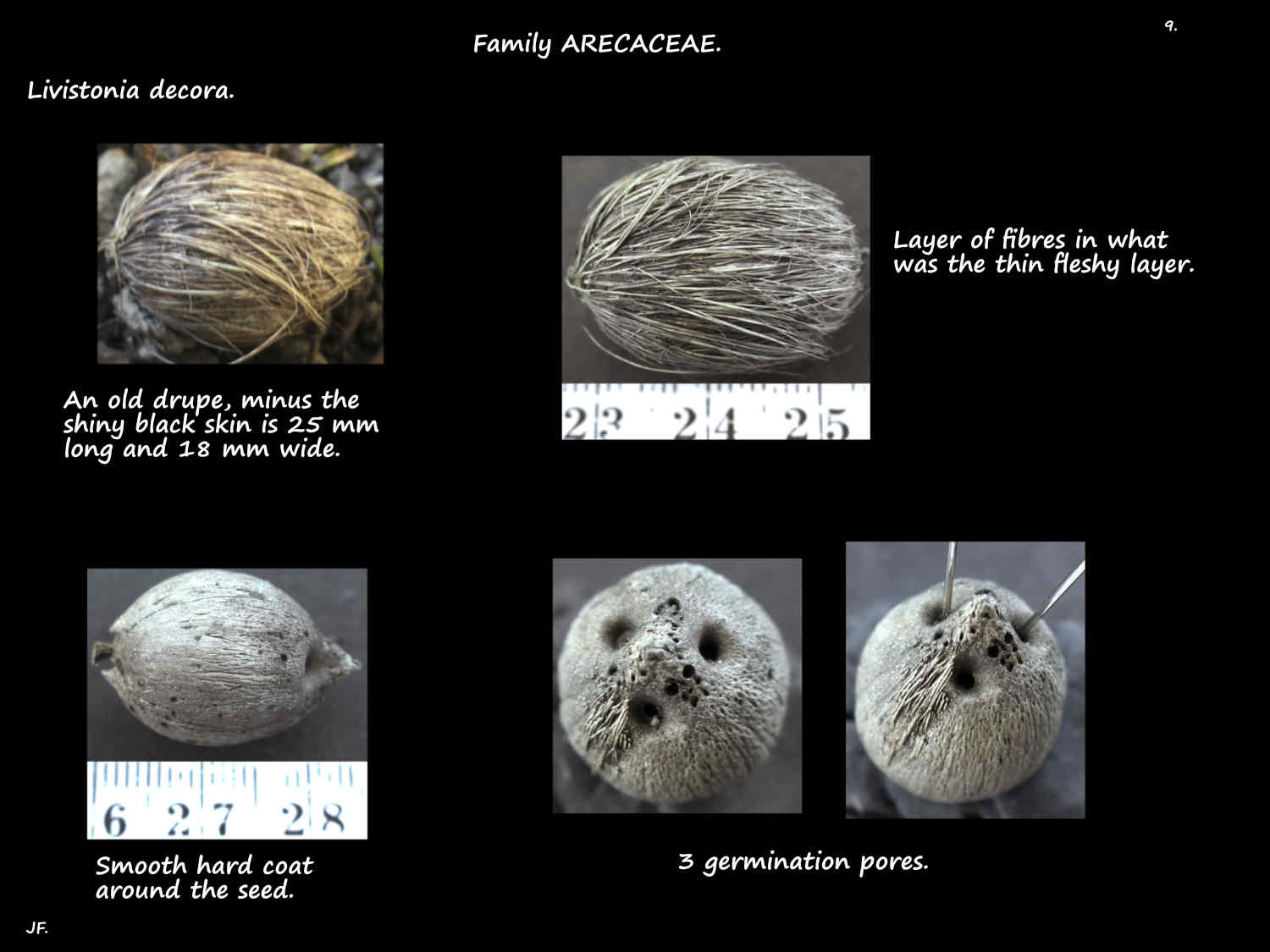In Family Arecaceae > Tribe Trachycarpeae it is native to eastern Queensland.
The Weeping Cabbage or Ribbon Fan Palm is widely cultivated.
In cultivation it is seen as a solitary palm or in clusters or rows.
The single trunk, up to 15 or nearly 20 m high has a diameter of 20 to 30 cm.
Young trunks are brown while old ones become grey.
The narrow ring scars are close and there are vertical fissures.
Old dead petiole bases (stubs) are seen on the slightly wider base.
The thin green petioles, longer than the blades can be around 2.5 m long.
The upper surface is flat or slightly grooved, the lower rounded.
The edges along the basal half to two-thirds have black spines.
The close, curved spines are up to 2 cm long.
The up to around 60 fan-shaped leaves are costapalmate.
The straight midrib can be 40 to 50 cm long.
Blades are deeply divided into 70 or 80 segments.
The divisions extend to around 85% of the distance to the midrib.
The basal undivided section is only 10 to 15 cm long.
The longest leaflets, in the centre can be 1 m long and 2 cm wide.
In all, the leaves can be up to 3 or 4 m long.
The linear to lance-shaped segments are divided for around 50% of their length.
Divided sections, with a pointed tip are pendulous.
Yellow-green on the upper surface they are paler underneath.
Numerous inflorescences, 1 to 3 m long do not extend past the leaves.
At the base of the peduncle is a woody prophyll nearly 40 cm long.
There are no peduncular bracts.
From the primary inflorescence midrib up to 13 partial or secondary ones branch off.
Partial ones, up to around 1 m long have a loose tubular bract at the base.
Further divisions give up to 4 levels of branching terminating in the rachillae.
The rachillae, up to around 20 cm long have spirally arranged flowers.
Funnel-shaped flowers are solitary, in pairs or small groups.
On a stalk 1 to 2 mm long have tiny bracteoles at the base.
The calyx, 1 to 1.5 mm long has a tubular base with 3 membranous lobes.
The 3 wide ovate yellow petals, nearly 2 mm long are thicker and fleshy.
The 6 stamens, with their filament bases fused, have dorsifixed anthers.
Styles of the 3 carpels are fused and there is a single stigma.
Typically only one carpel develops.
Flowers appear to be bisexual but are functionally male or female with each on separate palms.
Males have no ovule and females no fertile anthers.
The ovoid to spherical fruit, around 2 cm long mature to a shiny black.
Typically there is only 1 hard coated seed, around 1 cm long making them drupes.
The fleshy layer, around 2 mm thick has fibres in it.
J.F.
